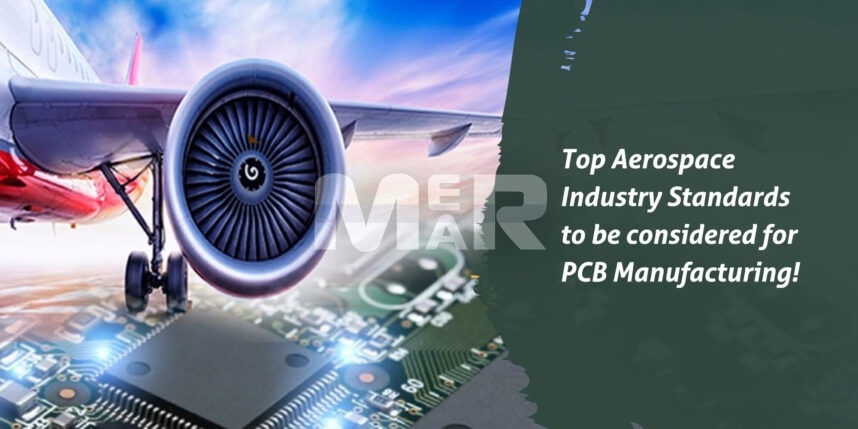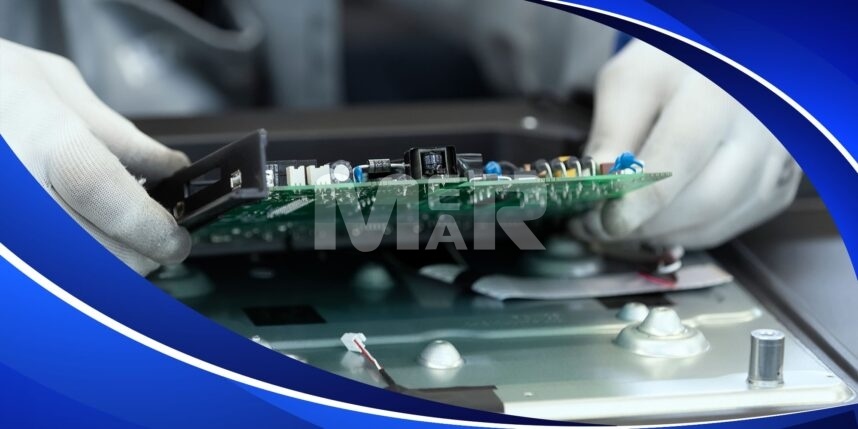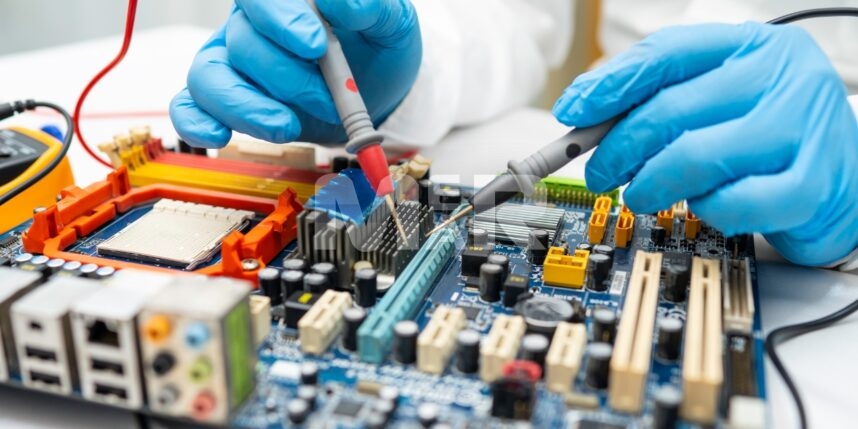Aerospace PCB Design Standards Guide to Manufacture Quality PCB

The aerospace industry is one of the booming industries that require reliable and durable electrical and mechanical systems. But are you aware that the Aerospace industry is also one of the highly regulated industries and every aerospace PCB need must meet high-quality and performance requirements? Every component that goes into PCB must meet certain quality and aerospace PCB design standards.
When compared to the other electronics devices, the aerospace industry demands extensive durability and reliability of PCBs. And the PCBs used in aerospace systems should be stronger to withstand extreme environments like high temperatures and moisture. Both design and manufacturing of PCBs should follow certain quality mandates and these are embodied in various rules, regulations, and guidelines.
PCB manufacturing is a major component of aerospace industry standards including AS9100D for quality management systems. The aerospace industry gives significant emphasis on the PCB manufacturing process and component procurement. Right from fabrication, component procurement, assembly, testing, and specifications of your boards, the aerospace industry standards are sorted for each aspect of the PCB manufacturing process.
YOU MAY ALSO LIKE: Rules to consider for aerospace PCB design
SAE Aerospace Standards
The SocietyThe Society of Automotive Engineers (SAE) sets a number of aerospace industry standards that are require to PCB manufacturing. One needs to incorporate the appropriate standards that are applicable to the development of your aerospace PCB boards.
| Aerospace Industry Standard | PCB Manufacturing Impact |
|---|---|
| AMS2750E | Component Procurement, Testing |
| AS9006A | Component Procurement, Assembly |
| AS9100D | Fabrication, Component Procurement, Assembly, Testing, Specifications |
| AS478N | Fabrication |
| AS5553A | Component Procurement |
| AS9101E | Specifications |
| AS9102B | Testing |
AMS2750E
This focuses on pyrometric requirements for devices like thermal processing equipment, thermal sensors, instruments. It also covers testing & surveying to make sure adherence to heat treatment specifications.
AS478N
About the type of markings and where to find or locate them for aerospace components
AS5553A
This rule puts forth generic requirements for every organization in the supply chain that procures and integrates components that will be used in aerospace systems.
AS9006A
Specifies software requirements and support components and devices that are part of a software system that goes into an aerospace system.
AS9100D
Specifies QMS requirements for the suppliers in the aerospace industry. This is applicable to both the in-house and outsourced manufacturing processes, management responsibilities, and focuses on customer satisfaction.
AS9101E
Provides guidelines for the auditing and reporting of QMS.
AS9102B
Provides a baseline First Article Inspection (FAI) requirement.
IPC Aerospace Standards
The Association Connecting Electronics Industries (ACEI) is a trade association that is aimed at standardizing the PCB assembly and production requirements. IPC is accredited by the ANSI (American National Standards Institute) and it publishes the acceptability standards in the electronics industry. Some of them are
- IPC-2221 – A generic standard on PCB
- IPC-2223 – Sectional design standard for flexible PCBs
- IPC-4562 – Metal foil for printed wiring applications
- IPC-4101 – Laminate prep materials standard
- IPC-4202 – Flex Base dielectrics to be used in PCBs
- IPC-4203 – Adhesive coated dielectric films to be used as cover sheets
- IPC-4204 – Flexible metal-clad dielectrics used in Fabrication
- IPC-A-600 – Acceptance of printed wiring boards
- IPC-6012 – Performance of rigid printed boards
- IPC-6013 – Specification for printed wiring both flex and rigid
- IPC-6018 – Performance specifications for high-frequency printed board
- IPC-3406 – For electrically conductive surface mount adhesives
- IPC-FA-251 – Assembly guidelines for both single and double-sided flex PCBs
Aerospace Safety Standards
Safety is a must thing in aerospace PCB development. The sheer number of standards and regulations are meant to provide the safety of aeronautical vehicle development. You need to follow certain safety standards for providing acceptable safety levels to ensure the safety of the people on board.
AS9100 –
PCB aerospace manufacturing must adhere to AS9100 that uses the ISO 9001 standard. AS9100 is not just a quality standard but also a safety standard for covering various aspects of the PCB manufacturing process. It adds additional requirements relating to safety and quality. Major aerospace manufacturers and suppliers across the world need to comply with AS9100.
Nadcap Aerospace Standards
Your aerospace electronics manufacturing standards have to be rigorously tested to meet all Nadcap aerospace standards to improve supplier quality throughout the industry through stringent requirements. By adhering to this, you can improve standardization and reduce costs.
International Traffic in Arms Regulations (ITAR)
ITAR is a set of US government regulations for controlling the export and import of aerospace systems. ITAR has made it mandated that all the manufacturers, brokers, exporters in the supply chain make sure that the ITAR compliance aerospace PCB assembly processes, services, equipment, and any technical data must be ITAR-compliant. Any non-compliance to ITAR may put your data into unauthorized hands and used for illegitimate purposes.
FAA Certification Standards
The Federal Aviation Administration (FAA) aircraft certification standards focus on many aspects of the mechanical, electrical, and operational requirements of the aviation industry. You can design and manufacture the tools early on to ensure your aircraft products are adhering to the reliability standards.
IPC standards should be at the forefront of your design strategy. Some of the important industry standards you need to comply with must be
- AS9001 quality tracking
- IPC class 3A for PCB design and manufacturing requirements
- CISPR standards specified by IEC
- EMC requirements specified by FCC
- Power requirements defined in the CBEMA curve
- MIL standards for PCBs in mission-critical aircrafts
- ISO
- IPC
- RTCA DO
These FAA standards will rigorously evaluate your PCB designs to ensure the highest performance in extreme environments.
So, if you find it difficult to keep a track of these standards, focus on finding a CM who makes these things an integral part of development from the beginning. You can build a collaborative relationship with your aerospace contract manufacturer (CM). They would make sure all your boards, components, and manufacturing processes meet and exceed the current aerospace industry standards.
Mer-Mar Electronics is one of the leading aerospace design and manufacturing companies that is specialized in building fast, precise, and high-quality aerospace PCB assembly. We are committed to accurately reflect your design specifications as well as meet the aerospace industry standards. We at Mermar Electronics, we assist our customers from initial design to mass production & delivery stage; as one of the leading Aerospace electronics manufacturing service (EMS) providers.








